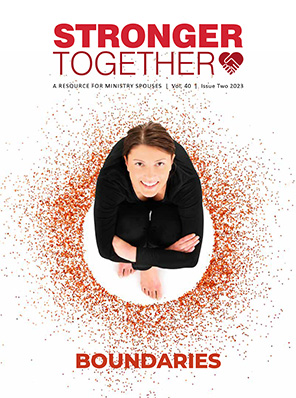Question: What is the most effective method of preventing illness and its spread?
Answer: Handwashing.
“Miss this question or one like it on any quiz, and the result will be an automatic failure.”
As nursing students, we heard this solemn statement from more than one of our clinical instructors throughout our training program. Most of us were taught from childhood up about the need for and benefits of frequently washing our hands, and yet it’s so easy to slip away from doing as recommended. Science clearly shows that countless lives could be saved and many health problems averted by the frequent and simple act of washing our hands with soap and water.
INVISIBLE ENEMIES
They are everywhere—on doorknobs, handrails, handshakes, desks, kitchen counters, shopping carts, items in stores, at work, on airplanes and car steering wheels, in bathrooms, dirty household laundry, sneezes and coughs of those around us, etc. Because we can’t see them and usually can’t even smell them on our hands, skin, and clothing, we tend to forget they are very real and a threat.
Germs, those microscopic organisms that carry harmful bacteria and viruses, can cause illnesses including colds, flu, COVID-19, gastrointestinal upsets and diseases, eye and skin infections, to name just a few. Resulting sicknesses can disrupt
normal daily life through missed work and school, loss of income, hospitalizations, epidemics, and deaths.
WHEN SICKNESS STRIKES
Generally, most of us could benefit health-wise from daily bathing, which promotes increased blood flow and cleansing of toxins and impurities collected on the skin. However, keeping clean is even more vital during episodes of sickness.
Coughing, sneezing, fevers, aches, and general discomfort indicate one has caught a bug. A comfortably warm and cleansing shower can offer relief when one is feeling at their worst. Toxins that accumulate from clogged pores are washed
away, congestion is loosened, and circulation is improved, thus aiding the work of the immune system. Fevers can be reduced, muscles relaxed, and symptoms eased. Afterward, with the providing of fresh, clean bedding and comfortable clothing, mind and spirit alike can be soothed from the discomforts of the illness.
WHY SOAP?
Soap products have been around for thousands of years. Even before people understood the chemistry of soap making, they had discovered that certain combined materials when mixed with water cleaned better than using water alone. Soap is made from vegetable or animal fats or oils, which when combined with an alkaline metal solution become a specialized type of fatty acid and salt. Washing with water alone is ineffective in eliminating the germy oils we acquire from the multiple contaminated surfaces we meet daily. However, because it is a fatty acid and salt mixture, soap becomes a lather when mixed with water and is thus enabled to break up the dirt, oils, and chemicals that have attached to the natural oils of our skin, allowing all to be washed away in the rinse water.
There appears to be no significant benefit from the use of antibacterial soap products as compared to plain soap and water. Some studies indicate that the frequent use of antibacterial soaps may contribute over time to antibiotic resistance. In the absence of soap and clean running water, use an alcohol-based hand sanitizer or hand wipes with an alcohol content of at least 60 percent. However, the best and most effective way to remove all types of germs and chemicals from your hands continues to be washing with soap and water.
WHEN TO WASH
It’s important to wash hands in the following instances:
• After returning home from shopping, visiting people, church meetings, or gatherings
• Before and after food preparation
• Before eating
• After playing with a pet
• After using the restroom
• After sneezing, coughing, or blowing your nose
• After handling dirty laundry
• After working in the garden or engaging in indoor cleaning
• Before and after visiting a sick person
• Anytime you feel your hands may have been exposed to germy or dirty surfaces
THE RIGHT METHOD
• Rinse your hands with clean water.
• Apply bar soap, powdered soap, or liquid soap.
• Work up a lather.
• Scrub for at least 20 seconds. (Singing the song “Happy Birthday” twice takes about 20 seconds.)
• Rinse with clean water.
• Dry with a clean towel, paper towel, blow dryer, or just air dry.
FINALLY . . .
The simple acts of washing our hands, bathing frequently with soap and water, and wearing clean clothing are proven effective and easy ways of eliminating harmful bacteria and viruses from our hands and bodies, thus protecting
ourselves and others from the effects and spread of germs and disease.
“Fearfully and wonderfully has the Creator wrought in the human frame, and He bids us make it our study, understand its needs, and act our part in preserving it from harm and defilement.”
—Ellen White, The Ministry of Healing, p. 271
INFORMATION SOURCES:
Ellen White, The Ministry of Healing, Pacific Press Publishing Association, 1905, p. 276
www.webmd.com/parenting/ss/slideshowparenting-stop-germs
www.defeatdd.org /blog /how-does-soapactually-work
www.cdc.gov/handwashing/faqs.html
www.webmd.com/a-to-z-guides/ss/slideshowhiding-laundry
www.thehealthsite.com/diseases-conditions/top-11-reasons-you-need-to-bathe-everydaysh214-119937/
www.waterpik.com/shower-head/blog/benefitsof-hot-shower-when-sick/
